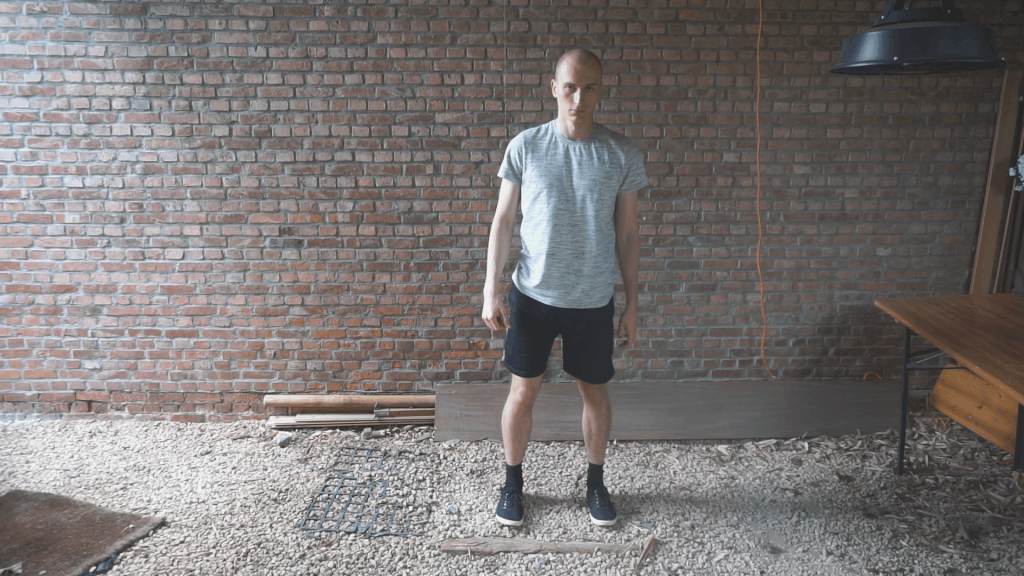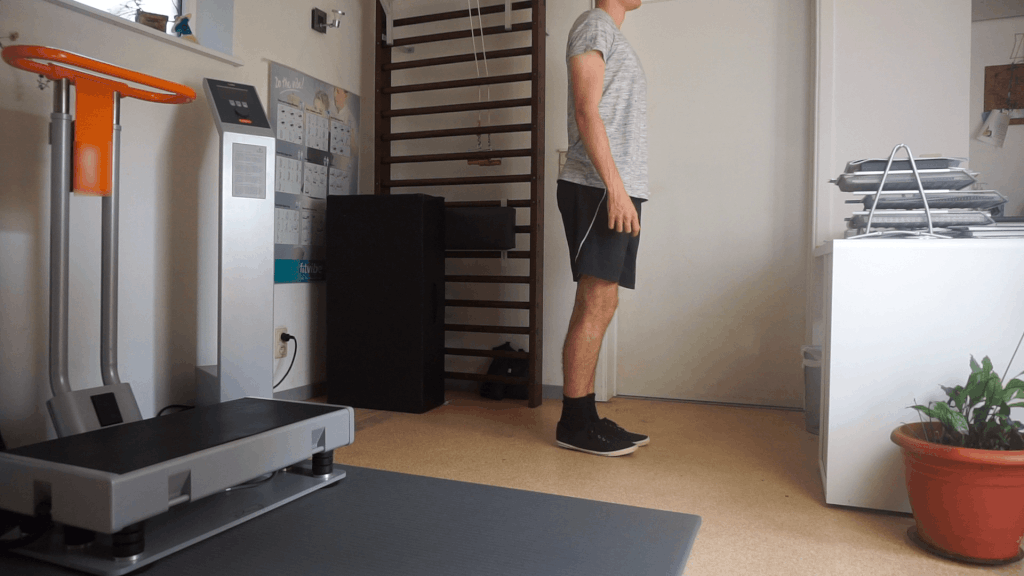Among the many lunge variations, there are the curtsy and reverse options. Find out the differences and which one you should do.
Both lunge variations require you to move with the back leg. However, in curtsy lunges you move this leg behind the other one. Reverse lunges simply require you to move the leg straight back.
Curtsy lunges will focus more on training your hip abductors (outer thigh muscles), hip adductors (inner thigh muscles), ankle muscles, and mobility.
Something to keep in mind is that curtsy lunges are also more challenging for your balance and joints like your knees and ankles. Individuals who have issues in these joints likely want to avoid curtsy lunges (for now).
Reverse lunges are very similar to regular lunges which means you can expect similar effects. They are also easier to do with extra weights. This may be needed for significant muscle growth and strength progress.
Both curtsy lunges and reverse lunges work your quadriceps (front thighs), glutes (butt), hamstrings (back thighs), and calves a nice amount.
Differences in technique
From a high-level view, the difference between these exercises comes from what direction you move your foot.
Curtsy lunges require you to move the foot behind the other leg. In reverse lunges, you simply move the foot backward.
You can find the more in depth walkthroughs for both movements below together with demonstrations to get a better idea of how each exercise looks.
How to do a curtsy lunge
Take the following steps to do a curtsy lunge:
- Stand upright with your feet about shoulder width apart. Choose which leg will be your first support leg.
- Slowly move the non-support leg backward and sideways toward and behind the support leg. At the same time slowly lower your body by bending the knee of the support leg. How far depends on different factors like knee health but at your lowest point you ideally want your knee and your front thigh at 90-degree angles.
- At the lowest position, your front leg is bent and your back leg is behind and to the outside of your support leg. The foot of the back leg only touches the ground with the front foot.
- Push yourself up again into starting position by stretching your support leg and moving your back leg to the center. Your front leg will likely push most of the weight.
- Repeat the same number of repetitions with your other leg as the support leg.
Make sure you do the same number of repetitions with each leg first to avoid any muscle imbalances.
One of the positive effects of curtsy lunges is that they can help you improve balance and coordination.
This also means that you may need to get used to the balance requirements of the movement before you can do curtsy lunges confidently.

How to do a reverse lunge
Take the following steps to do a reverse lunge:
- Stand up straight with your feet about shoulder width apart.
- Take a big step backward so that you get into a position where both of your knees are at 90-degree angles. Your front foot should be flat on the ground and your back foot should only touch the ground with the ball (front) of the foot.
- Move your back foot forward to get back into the previous position. Make sure you use your front leg muscles to move upward and not the momentum of your back foot.
- Repeat the same number of repetitions with your other leg backward.
If you are struggling with the balance aspect of reverse lunges, you can put your feet slightly further apart horizontally speaking.

Differences in muscles worked
Because the movements are not the same, there is also a difference in terms of what muscles you work in what ratios.
The muscles worked with reverse lunges are very similar to regular lunges. That means you mainly work your quadriceps, glutes, hamstrings, and calves.
The main muscles used in curtsy lunges are the same but on top of these, you work your hip abductors (outer thigh muscles), hip adductors (inner thigh muscles), and ankle muscles more.
This aspect of curtsy lunges can be helpful if you want to work these muscles. However, something to note is that it can also make it so you work out the typical lunge leg muscles less effectively.
How challenging is each one on your body
There are two other factors that influence what type of lunge is the best for you. These include how much extra weight you can use and how the exercises feel on body parts like your joints.
For example, doing weighted curtsy lunges can be hard due to the extra balance challenge. This could prevent you from working the main muscles optimally for growth and strength progress.
Additionally, both bodyweight and weighted reverse lunges are typically easier on your joints. Some people find curtsy lunges uncomfortable on their ankles, knees, and hips.
The effects of this can range from a slightly uncomfortable workout to not being able to exercise due to injuries. If you already have issues in the joints mentioned, you likely want to avoid curtsy lunges (for now).
